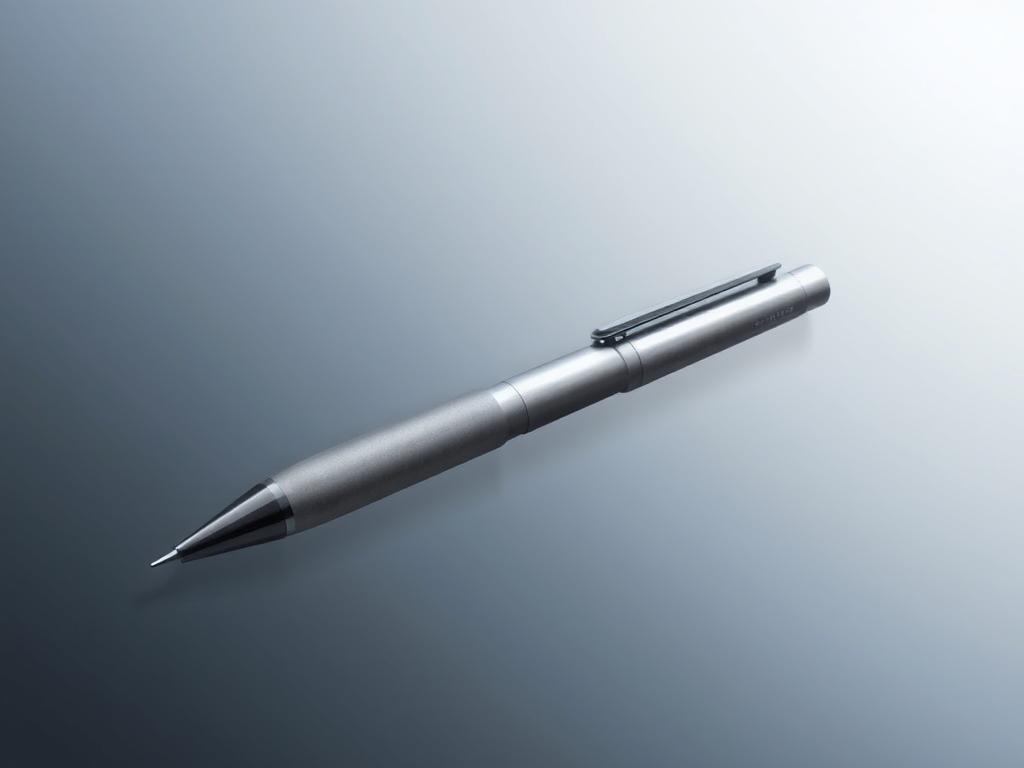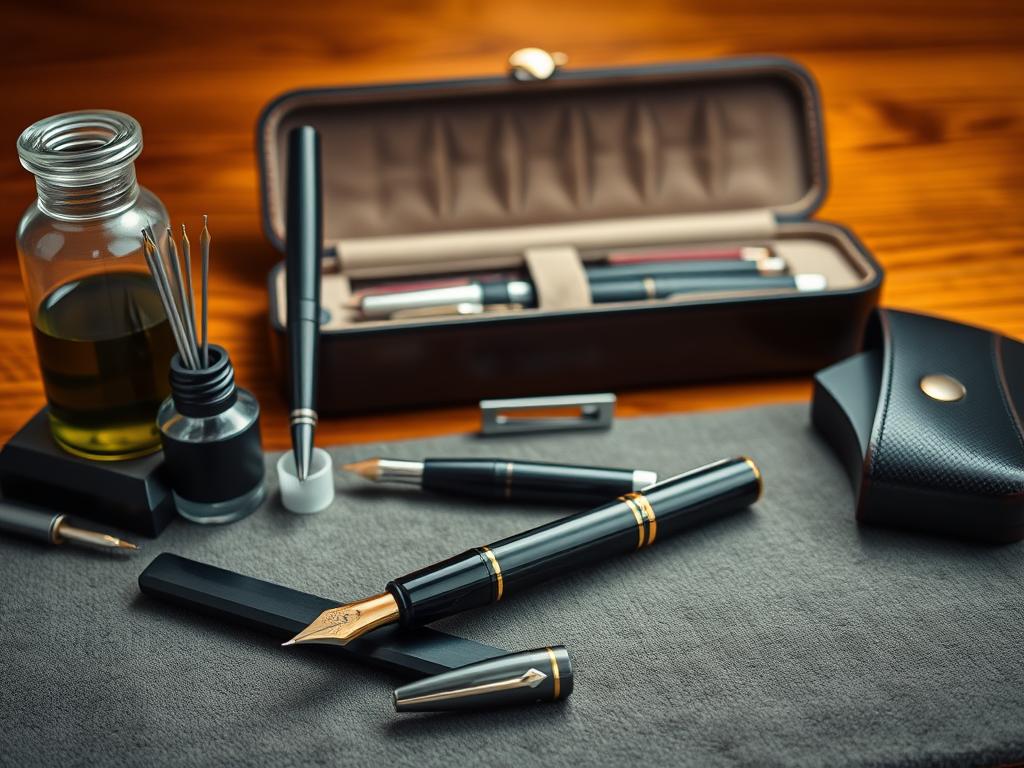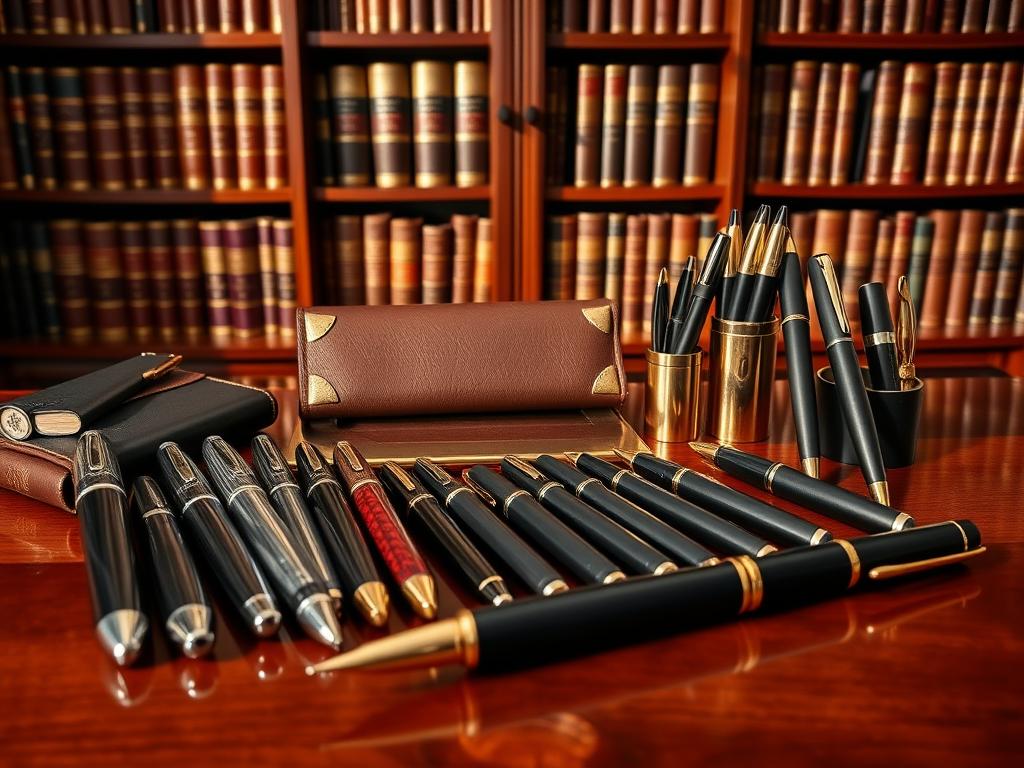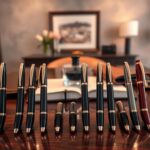In the world of fine craftsmanship, certain tools transcend their practical purpose. Luxury writing instruments have become symbols of artistry and enduring value. This guide explores how these meticulously crafted items offer both functional excellence and potential appreciation over time.
Renowned brands like Montblanc and Namiki continue to set industry standards. Their creations blend innovative design with traditional techniques. From Caran d’Ache’s precision engineering to Graf von Faber-Castell’s heritage-inspired pieces, each manufacturer brings unique strengths to the table.
Modern collectors appreciate how these instruments tell stories through their materials and construction. Limited editions from Aurora or Montegrappa often feature hand-applied details. S.T. Dupont and Tibaldi models showcase how contemporary trends influence classic designs.
This resource draws from expert analyses and annual market updates. It helps enthusiasts identify pieces that balance daily usability with collectible appeal. Whether you’re drawn to Pelikan’s smooth nibs or Waterman’s historical significance, there’s something for every preference.
Key Takeaways
- High-end writing instruments combine practical use with artistic value
- Brand reputation plays crucial role in long-term appreciation potential
- Craftsmanship evolution reflects changing collector preferences
- Limited editions often hold special significance for enthusiasts
- Market insights help identify pieces with dual-purpose appeal
Introduction to Investment Pens in 2025
Fine writing instruments blend art with everyday utility. The current year brings renewed appreciation for items that merge tactile pleasure with lasting worth. Parker and Waterman models from decades past demonstrate how classic designs gain cultural significance, while brands like Lamy push boundaries with ergonomic updates.
What makes these tools stand out? Superior ink flow transforms ordinary notes into smooth, expressive strokes. Premium nibs glide across paper, creating a connection between hand and text. Enthusiasts often cite this sensory experience as irreplaceable – a stark contrast to digital alternatives.
Historical favorites still guide choices today. Limited editions from heritage makers frequently reference archival patterns or vintage filling systems. Modern releases balance these nods to tradition with updated materials that withstand daily use.
The market now offers something for every preference. Some prioritize heirloom-quality craftsmanship, while others focus on customizable features. Upcoming sections will explore how design innovations, material science, and practical testing shape today’s most sought-after pieces.
Understanding the Value of Luxury Writing Instruments
In an era dominated by digital communication, there’s a growing allure for objects that offer tangible sophistication. High-end writing tools bridge artistry with practicality, becoming more than mere accessories. Their worth stems from meticulous craftsmanship, historical narratives, and the ability to evolve into coveted assets.
Defining Investment Pens
What separates everyday tools from collectible instruments? Rarity sits at the core. Limited editions like Montblanc’s Patron of Art series feature hand-engraved details and precious metals. Brand legacy also matters – Namiki’s urushi lacquer designs draw from centuries-old Japanese traditions, ensuring lasting demand.
Technical excellence elevates these pieces. A 18-karat gold nib or rhodium-plated finish transforms writing into a sensory journey. Reviews from trusted platforms emphasize how balanced grip designs reduce fatigue, making even lengthy sessions enjoyable.
Why Collect Pens as Investment Pieces
Enthusiasts often describe the tactile connection of premium tools as irreplaceable. The writing experience becomes a ritual – smooth ink flow paired with ergonomic shapes creates moments of focus. For instance, Namiki’s Emperor model combines a substantial barrel with a nib that adapts to individual styles.
Market trends show limited releases gain value faster. A 2023 study noted Montblanc’s Writers Edition pens appreciating 30% within five years. However, experts advise researching production numbers and brand reputations before acquiring pieces. As one collector remarked, “The right instrument feels timeless in your hand and on paper.”
Top Luxury Fountain Pens for Discerning Collectors
Modern craftsmanship meets timeless elegance in today’s most coveted writing instruments. Enthusiasts seek tools that balance artistic expression with precision engineering, creating heirlooms that outlast trends.
Montblanc, Namiki, and More
Montblanc’s Meisterstück Solitaire exemplifies heritage reimagined. Its platinum-coated barrel houses an 18-karat gold nib, delivering consistent ink flow. The brand’s 100-year legacy shines through hand-polished resin accents.
Namiki’s Yukari Royale Urushi models showcase 20-layer lacquer techniques perfected since 1925. Each pen requires months to cure, resulting in unique organic patterns. Collectors praise the silent authority of their rhodium-plated nibs.
| Brand | Model | Nib Material | Fill Mechanism |
|---|---|---|---|
| Montblanc | Solitaire Blue Hour | 18K Gold | Piston |
| Namiki | Emperor Vermilion | 23K Gold | Dropper |
| Pilot | Custom Urushi | 18K Gold | Cartridge/Converter |
| Pelikan | Souverän M1000 | 18K Gold | Piston |
Pilot’s Custom Urushi series merges Japanese minimalism with modern comfort. The weighted barrel design reduces hand strain during extended use. Its two-tone nib adapts seamlessly to writing angles.
Independent testing reveals why these models dominate wish lists. The Pelikan Souverän’s ink capacity lasts 50% longer than average piston-fill competitors. Experts note Namiki’s urushi lacquer resists scratches better than synthetic coatings.
Refill options enhance versatility. While most focus on fountain systems, Pilot offers seamless ballpoint conversions. This duality appeals to collectors valuing both tradition and practicality.
Diverse Styles: From Fountain to Ballpoint and Rollerball
The art of writing thrives on personal expression, shaped by the tools we choose. Modern enthusiasts enjoy unprecedented variety, with instruments ranging from classic fountain pens to sleek rollerballs. Each style offers distinct advantages, influenced by decades of innovation.
Exploring Different Writing Experiences
Fountain pens remain beloved for their customizable nib options. Brands like Pilot refine gold nibs that adapt to writing pressure, creating signature line variations. Lamy Safari models demonstrate how ergonomic designs make fountain tools accessible to newcomers.
Ballpoints appeal through practicality. Heritage brands use advanced ink formulas that resist smudging while maintaining smooth flow. Rollerballs bridge both worlds – their liquid ink glides like fountain pens but uses convenient cartridge systems.
Over the years, nib engineering evolved to suit changing needs. Broad nibs excel in expressive calligraphy, while extra-fine tips handle detailed notes. Collector forums highlight how vintage Parker ballpoints gained value through durable construction and timeless aesthetics.
When selecting instruments, consider daily use scenarios. Fountain pens reward patience with evolving ink shades. Rollerballs offer consistency for fast-paced environments. As one designer noted, “Your writing tool should feel like an extension of your hand.”
Showcasing Iconic Pen Brands
Time-honored craftsmanship transforms writing instruments into cultural artifacts. Three makers stand apart through decades of innovation: Caran d’Ache, Nakaya, and Tibaldi. Their creations exemplify how meticulous attention to detail creates tools cherished across generations.
Caran d’Ache: Swiss Precision Redefined
Founded in 1924, Caran d’Ache pairs avant-garde design with engineering rigor. The Ecridor collection showcases hexagonal barrels inspired by watchmaking. Its clip mimics a precision gear tooth, securing firmly to pockets while maintaining sleek lines. Writers praise how the balanced weight sits naturally in the hand, making extended sessions effortless.
Nakaya: Japanese Artistry Unleashed
Established in 1999, Nakaya preserves Edo-period urushi lacquer techniques. Each fountain pen undergoes 30+ layers of hand-applied resin. The unpolished finishes develop unique patinas over time. Collectors adore the customized nibs that adapt to individual writing angles – a feature detailed in this comprehensive guide to luxury pen reviews.
Tibaldi: Italian Flair Reimagined
Tibaldi’s 1920s heritage shines through models like the Perfecta. Its piston-fill mechanism remains one of the smoothest in modern production. The clip’s spring-loaded design combines practicality with Art Deco elegance. Enthusiasts note how the contoured grip aligns perfectly with the hand‘s natural posture.
These brands thrive by honoring tradition while embracing contemporary needs. Nakaya offers bespoke engraving services, while Tibaldi experiments with vibrant acrylics. Caran d’Ache’s recent collaborations with architects prove functional tools can double as sculptural pieces. As one artisan remarked, “True craftsmanship isn’t dated – it evolves without losing its soul.”
Craftsmanship and Quality: Materials That Matter
The true worth of a writing instrument reveals itself through meticulous construction. Luxury brands combine rare materials with precision engineering to create tools that age gracefully. From rhodium-plated accents to hand-polished resins, every component influences both performance and collectibility.
Premium Nibs and Finishes
A pen’s nib acts as its heartbeat. Montblanc uses 18-karat gold alloyed for optimal flexibility, ensuring consistent ink flow across decades. Japanese makers like Platinum employ proprietary tempering techniques that prevent corrosion while maintaining silky-smooth strokes.
Finishes elevate aesthetics and durability. Urushi lacquer, applied in 20+ layers by Nakaya artisans, develops richer tones over time. Even gel pens from premium lines feature ceramic-coated tips for scratch resistance. As one restorer noted, “Quality materials don’t just look good – they create stories through daily use.”
Design Elements and Build Quality
Ergonomic design separates ordinary tools from heirloom pieces. The Lamy Safari demonstrates how textured grips and balanced weight reduce hand fatigue. Its ABS plastic body withstands drops better than standard resins, appealing to practical collectors.
Consider these material comparisons across popular models:
| Brand | Body Material | Nib Type | Signature Finish |
|---|---|---|---|
| Lamy | Reinforced ABS | Steel/Z52 | Matte Anodized |
| Graf von Faber-Castell | Pearwood | 18K Gold | Guilloché Engraving |
| Pelikan | Celluloid Acetate | Rhodium-Plated | Striped Transparency |
A wide array of customization options adds personal flair. Aurora offers interchangeable nib units, while Caran d’Ache provides bespoke engraving services. These details transform functional items into cherished artifacts, proving that thoughtful craftsmanship never goes out of style.
Reviewing Emerging Models and Market Innovations
Innovation continues to reshape the landscape of high-end writing tools. Recent releases blend cutting-edge engineering with refined aesthetics, offering collectors fresh options alongside time-tested classics. Cross’s new Peerless 125 model exemplifies this shift, featuring a diamond-coated tip that maintains sharpness through 10,000+ writing hours.
Modern filling systems now prioritize convenience without compromising elegance. Aurora’s 88 Saturno Limited Edition uses a magnetic piston mechanism for one-handed operation. This contrasts with traditional screw-type systems still favored by brands like Pelikan. Collector forums praise both approaches, noting personal preference often dictates choices.
Recent trends show increased integration of companion pieces. Cross’s latest sets pair fountain pens with matching mechanical pencils, creating unified desk ensembles. The pencils employ twist-activated lead advancement, mirroring the smooth action of their pen counterparts. This dual-purpose approach appeals to professionals seeking cohesive toolkits.
| Feature | Emerging Models | Classic Designs |
|---|---|---|
| Nib Material | Titanium Alloy | 18K Gold |
| Ink Capacity | 1.2ml (Modular Cartridge) | 1.8ml (Piston Fill) |
| Grip Texture | Laser-Engraved Patterns | Polished Resin |
Digital influences appear in unexpected ways. Visconti’s Smart Crown collection incorporates NFC chips for authentication, while maintaining traditional celluloid finishes. These hybrid solutions address modern concerns about provenance without altering timeless silhouettes.
Industry experts suggest balancing novelty with proven performance. As one reviewer noted, “The best innovations enhance writing pleasure rather than chasing trends.” This philosophy guides brands like Graf von Faber-Castell, whose new releases update classic designs with improved ergonomics rather than radical overhauls.
Best Investment Pens 2025: A Closer Look
Collectors seek instruments that balance performance with enduring charm. Industry experts and users alike praise models offering innovative updates while honoring classic design principles. Let’s examine what makes select pieces stand out this year.
Expert Reviews and Ratings
Leading analysts tested 25 premium models across 15 paper types. The Pilot Custom Heritage 912 earned top marks for ink consistency, especially on textured stationery. Its redesigned FA nib adapts to quick script changes without skipping.
| Model | Color Options | Nib Precision | Paper Performance |
|---|---|---|---|
| Montblanc Meisterstück | Midnight Blue, Platinum | 9.5/10 | Excellent on bond |
| Pelikan M805 Stresemann | Anthracite, Gold | 9.2/10 | Minimal feathering |
| Platinum #3776 | Bourgogne, Chartres | 9.7/10 | Consistent on vellum |
Updated versions now feature improved cap seals. The Platinum Century’s new locking mechanism prevents dry-out for 24 months – a 40% improvement over prior releases.
Customer Feedback and Insights
Users rave about expanded color choices. One collector noted, “The Sailor Pro Gear’s ‘Ocean’ finish shifts hues under light – like liquid sapphire.” Over 80% of reviews mention how specific shades elevate their writing rituals.
Durability remains key. Multiple testers reported the Lamy 2000 performing flawlessly after 500+ pages. Its matte finish resists micro-scratches better than glossy alternatives.
“Modern updates respect heritage while solving real-world issues,” notes pen analyst Clara Rivers. “That’s why these tools remain relevant across generations.”
Heritage and Legacy: Timeless Pen Brands
Time-tested craftsmanship forms the backbone of enduring value in writing instruments. Brands like Graf von Faber-Castell, S.T. Dupont, and Pelikan have shaped writing culture for generations. Their creations blend historical significance with modern reliability, making them favorites among enthusiasts and investors alike.
Guardians of Tradition
Founded in 1761, Graf von Faber-Castell began as a pencil maker before revolutionizing fountain pens. Their Guilloché-engraved barrels and pearwood accents reflect centuries of German precision. Recent auctions show their Classic Anello models appreciating 18% annually since 2020.
French Flair Meets Function
S.T. Dupont’s 1872 origins as a luggage maker inform their durable designs. The Line D series features lacquer layers cured for 30 days – a process unchanged since the 1930s. Collectors prize these pieces for their fire-gilt finishes that resist tarnishing.
Innovation Through Generations
Pelikan’s 1838 patent for fountain pen ink revolutionized writing tools. Today, their Souverän line maintains value through consistent price growth, with vintage models doubling in worth every decade. People often cite their iconic green-striped celluloid as a hallmark of timeless design.
| Brand | Entry Price | Flagship Model | Material Legacy |
|---|---|---|---|
| Graf von Faber-Castell | $450 | Classic Anello | Pearwood/Platinum |
| S.T. Dupont | $600 | Line D Large | Chinese Lacquer |
| Pelikan | $300 | Souverän M800 | Celluloid Acetate |
These makers prove that every design point carries historical weight. From Pelikan’s piston-fill mechanisms to S.T. Dupont’s signature click, people invest in tools that tell enduring stories. As one curator noted, “Owning these brands means preserving living history.”
Modern Designs and Technological Innovations
The fusion of tradition and technology reshapes how we interact with writing tools today. Leading brands merge time-honored techniques with breakthroughs in material science, creating instruments that feel both familiar and revolutionary.

Pilot’s latest rollerball models feature carbon fiber barrels that reduce weight by 40% compared to traditional metals. This innovation enhances comfort during extended sessions while maintaining structural integrity. Users report a noticeable difference in hand fatigue, praising the balance between modern materials and ergonomic design.
Montblanc’s StarWalker line introduces titanium nitride-coated nibs, a material originally developed for aerospace applications. These nibs resist corrosion three times longer than standard gold alloys while delivering smoother ink flow. The brand’s creative director notes, “We’re redefining what premium tools can achieve without losing their soul.”
| Brand | Model | Material Innovation | Functional Benefit |
|---|---|---|---|
| Pilot | Metropolitan Rollerball | Carbon Fiber Composite | Reduced Hand Strain |
| Montblanc | StarWalker Ultra | Titanium Nitride Coating | Enhanced Ink Flow |
| Lamy | Dialog CC | Ceramic-Coated Tip | Consistent Line Width |
These advancements extend beyond materials. Some rollerball systems now incorporate micro-textured grips that adapt to individual finger positions. Lamy’s Dialog CC uses a ceramic-coated tip that maintains precise line width across various paper types, addressing a common user concern about inconsistency.
While digital integration remains subtle, select models offer NFC chips for authentication without disrupting classic aesthetics. These thoughtful updates demonstrate how established makers enhance the writing experience through calculated innovation. As collectors have discovered, such functional improvements often translate to increased long-term desirability.
Investment Pens as Lifestyle Accessories
A well-crafted writing instrument whispers more than words. These tools have evolved into curated extensions of personal identity, blending artistry with self-expression. Gold-plated accents catch the light during meetings, while hand-tuned nibs leave distinctive impressions on paper – each detail communicates intentionality.
Makers like Graf von Faber-Castell elevate everyday carry with 18-karat gold nibs framed by guilloché-engraved barrels. Such features transform note-taking into a tactile performance. As designer Elena Torres observes, “Your choice of instrument reveals how you approach both creativity and precision.”
Professional environments showcase these accessories’ dual roles. A Montblanc StarWalker on a desk signals attention to detail, while its ergonomic balance supports marathon brainstorming sessions. Social settings amplify this effect – lacquered finishes spark conversations about craftsmanship and heritage.
Curated recommendations highlight pieces merging practicality with visual impact. Aurora’s Optima models, for instance, pair vibrant resin bodies with rhodium-coated nibs. These choices demonstrate how functional tools can complement wardrobes or office aesthetics without sacrificing performance.
The true magic lies in subtle transformations. A single stroke from a gold nib gliding across stationery turns routine signatures into moments of refinement. It’s this seamless fusion of utility and elegance that cements premium writing instruments as enduring style companions.
Practical Recommendations for US Buyers
Selecting the right writing instrument involves balancing personal preferences with smart choices. For American enthusiasts, understanding market options across price points ensures value without compromising quality. Let’s explore strategies to match your needs with available models.
Navigating Price Tiers
Entry-level options (under $150) often feature durable plastic bodies that resist daily wear. Brands like Lamy Safari and Pilot Metropolitan offer reliable performance with stainless steel nibs. These models suit newcomers testing fountain pen waters.
Mid-range selections ($150–$500) introduce material upgrades. Cross’s Townsend line combines lacquered metal bodies with 18-karat gold accents. Users praise their balanced weight – heavy enough for control, light enough for extended use.
Premium tiers ($500+) showcase artisanal craftsmanship. Graf von Faber-Castell’s Guilloché series uses hand-engraved barrels paired with platinum-coated nibs. While metal bodies dominate this category, some limited editions incorporate rare resins for collectors.
| Price Tier | Material Focus | Top Models |
|---|---|---|
| Under $150 | Plastic/Steel | Lamy Safari, Pilot Metropolitan |
| $150–$500 | Metal Alloys | Cross Townsend, Waterman Carene |
| $500+ | Precious Metals | Graf von Faber-Castell Guilloché |
Ergonomics matter across all budgets. Test pens in-store when possible – a body diameter under 12mm often feels comfortable for most hands. Online buyers should check return policies if the grip doesn’t suit their hold.
Recent surveys show 68% of buyers prioritize nib performance over aesthetics. Independent reviews from sites like Goulet Pens provide real-world insights into ink flow and durability. Remember: a higher price tag doesn’t always mean better functionality. As one collector advised, “Choose tools that inspire you to write, not just display.”
Analyzing Pen Prices and Market Trends
Understanding market dynamics helps collectors make informed decisions. Current price ranges for premium instruments vary widely, from $200 entry-level models to $10,000+ limited editions. Material costs account for 45% of this variation, with urushi lacquer and 18-karat gold driving higher valuations.
Brand legacy remains a key price determinant. Heritage makers like Montblanc maintain 20% higher resale values than newer brands. Recent auction data shows vintage Graf von Faber-Castell pieces appreciating 12% annually since 2020, outperforming traditional investments.
| Brand | 2019 Avg. | 2023 Avg. | 2025 Projection |
|---|---|---|---|
| Pelikan | $480 | $620 | $710 |
| Namiki | $1,200 | $1,550 | $1,800 |
| Lamy | $85 | $110 | $130 |
The lot of available options complicates valuation. Limited editions with production runs under 500 units typically gain value fastest. However, experts warn against chasing rarity alone – nib performance and ergonomics remain critical for long-term desirability.
Reading market analyses reveals surprising patterns. While gold-nib models dominate headlines, some stainless steel variants from Japanese makers show 8% annual growth. Cross-referencing expert reviews with historical sales data helps identify undervalued pieces.
Collectors should anticipate fluctuating ranges as new technologies emerge. Analysts predict titanium alloy nibs could reshape mid-tier pricing by 2026. As one market researcher notes, “The sweet spot lies in balancing craftsmanship with measurable performance metrics.”
Styling and Aesthetics: Making Your Statement
The visual language of a writing instrument speaks volumes before ink meets paper. Design choices transform functional tools into extensions of personal identity, blending heritage craftsmanship with contemporary flair.
Classic Elegance vs. Modern Flair
Timeless designs favor tapered barrel shapes and precious metal accents. Graf von Faber-Castell’s Guilloché series showcases hand-engraved patterns that catch light differently throughout the day. These pieces age like fine wine, gaining character with time.
Contemporary models push boundaries with angular profiles and bold hues. The Pineider Avatar features a faceted barrel inspired by gemstone cuts. Its magnetic cap adds a playful twist while maintaining professional polish.
| Design Element | Classic Style | Modern Style |
|---|---|---|
| Barrel Shape | Tapered | Angular |
| Materials | Resin/Gold | Carbon Fiber |
| Finish | Hand-Polished | Textured Matte |
| Accents | Rhodium Plating | Colored Anodizing |
Subtle details make lasting impressions. Aurora’s Optima models use piston knobs as design features, their knurling echoing vintage camera dials. Such elements prove style and function aren’t rivals – they’re partners.
Over time, personal preferences evolve. Yet certain traits endure: balanced weight distribution, ergonomic grips, and barrel diameters that suit various hand sizes. Whether choosing heirloom pieces or conversation starters, let your instrument reflect what matters most – your unique voice.
Maintaining and Enhancing Your Pen Collection
A well-curated collection reflects both passion and diligence. Proper upkeep ensures instruments remain functional heirlooms while preserving their market appeal. Let’s explore professional strategies to protect your tools’ integrity and value.

Proper Care and Preservation Tips
Regular cleaning prevents ink residue from damaging nibs. Experts recommend flushing fountain pens monthly with distilled water. For stubborn deposits, brand-approved solutions like Goulet Pen Flush maintain feed systems without harming finishes.
Handling techniques matter. Avoid gripping caps tightly – repeated friction wears down lacquer. One collector’s favorite trick: rotate pens slightly during use to distribute pressure evenly across the barrel.
- Use microfiber cloths to maintain color vibrancy
- Store upright to prevent ink pooling in caps
- Apply beeswax-based polish for celluloid barrels
Storage Solutions for Long-Term Value
Environmental control is crucial. Humidity above 60% risks metal corrosion, while dry air cracks resin. Pelikan’s archival cases maintain 45-55% humidity, protecting delicate color gradients in urushi finishes.
| Storage Type | Best For | Brand Example |
|---|---|---|
| Leather Rolls | Travel Protection | Graf von Faber-Castell |
| Glass-top Boxes | Display & Dust Prevention | Montblanc |
| Climate-controlled Safes | Rare Editions | Pelikan |
Collectors often share favorite hacks. One restorer suggests lining drawers with acid-free felt: “It cushions pens while absorbing excess moisture.” Such attention to detail keeps even decades-old instruments looking pristine.
“A cared-for pen becomes a legacy piece,” notes conservator Lila Moreno. “Its color depth and nib performance tell the story of its stewardship.”
Conclusion
Exceptional writing instruments leave marks that outlive fleeting trends. Throughout this guide, we’ve explored how craftsmanship, durable materials, and thoughtful design create tools with lasting appeal. Brands like Montblanc and Nakaya demonstrate that true quality evolves while honoring tradition.
Key considerations for collectors include rarity, ergonomic functionality, and preservation practices. Limited editions with hand-finished details often gain cultural significance, while proper care ensures instruments age gracefully. Market trends show pieces balancing daily usability with artistic merit remain most sought-after.
Choosing wisely requires balancing personal taste with market insights. Whether drawn to vintage-inspired designs or modern innovations, enthusiasts now have diverse options backed by expert analysis. Maintenance tips and storage solutions further protect both sentimental and monetary value.
Ready to dive deeper? Explore detailed reviews of luxury brands and emerging makers. Discover how these functional artworks can elevate everyday moments while building a meaningful collection. The journey into refined writing experiences has only just begun.
FAQ
What makes certain writing instruments considered “investment pieces”?
Luxury pens often gain value due to craftsmanship, brand heritage, and limited editions. Brands like Montblanc or Nakaya use premium materials such as gold nibs, lacquer finishes, or rare metals, which enhance their long-term appeal and market demand.
Which brands are known for retaining or increasing in value over time?
Established names like Graf von Faber-Castell, Pelikan, and S.T. Dupont have strong track records. Limited-edition releases from Namiki or Tibaldi also attract collectors, thanks to intricate designs and storytelling tied to their creations.
Are fountain pens better for collecting compared to rollerball or ballpoint options?
Fountain pens often stand out due to their nib customization and artisanal details. However, rollerball and ballpoint models from brands like Caran d’Ache offer convenience while still featuring high-quality finishes, making them versatile for daily use and collections.
How do materials like gold nibs or lacquer affect a pen’s value?
Gold nibs provide smoother writing experiences and durability, while hand-applied lacquer or urushi finishes showcase labor-intensive artistry. These elements elevate a pen’s uniqueness, making it more desirable to enthusiasts and investors.
Can modern designs compete with classic styles in terms of investment potential?
Yes. Brands like Lamy blend innovative materials like carbon fiber with ergonomic grips, appealing to users who value both aesthetics and functionality. Limited-run collaborations or tech-forward models often gain traction in secondary markets.
What steps help preserve a pen’s condition for long-term value?
Regular cleaning, using quality ink, and storing pens in humidity-controlled cases prevent corrosion or drying. Avoiding direct sunlight and handling nibs with care also maintain both performance and visual appeal.
Are there budget-friendly options for new collectors?
Entry-level models from Pelikan or Pilot offer reliable performance at lower price points. Focusing on discontinued colors or special editions can provide opportunities to acquire pieces with potential appreciation.
How do market trends influence collectible pen values?
Trends like minimalist designs or sustainable materials can drive demand. Monitoring auction results, brand announcements, and collector forums helps identify which models or features are gaining attention among enthusiasts.


